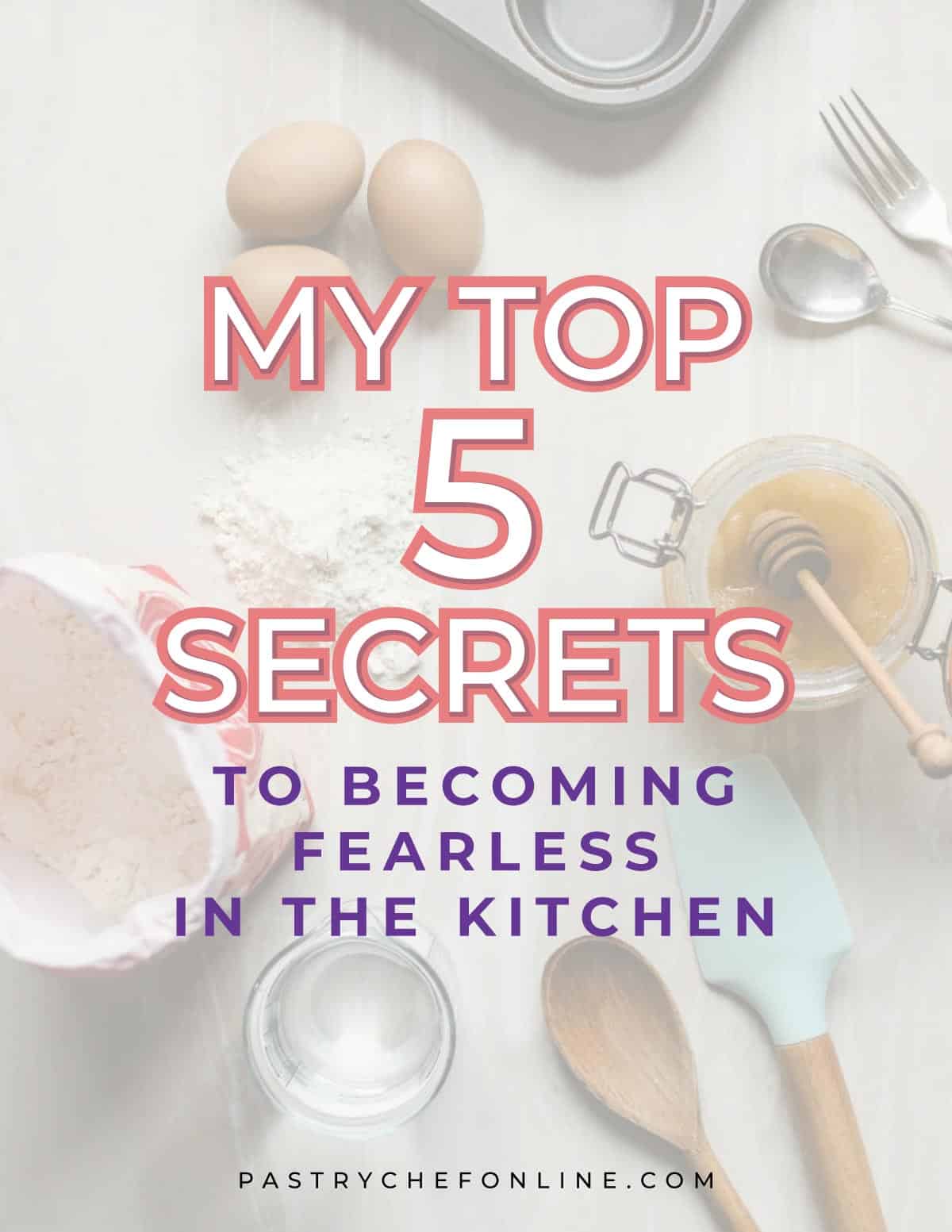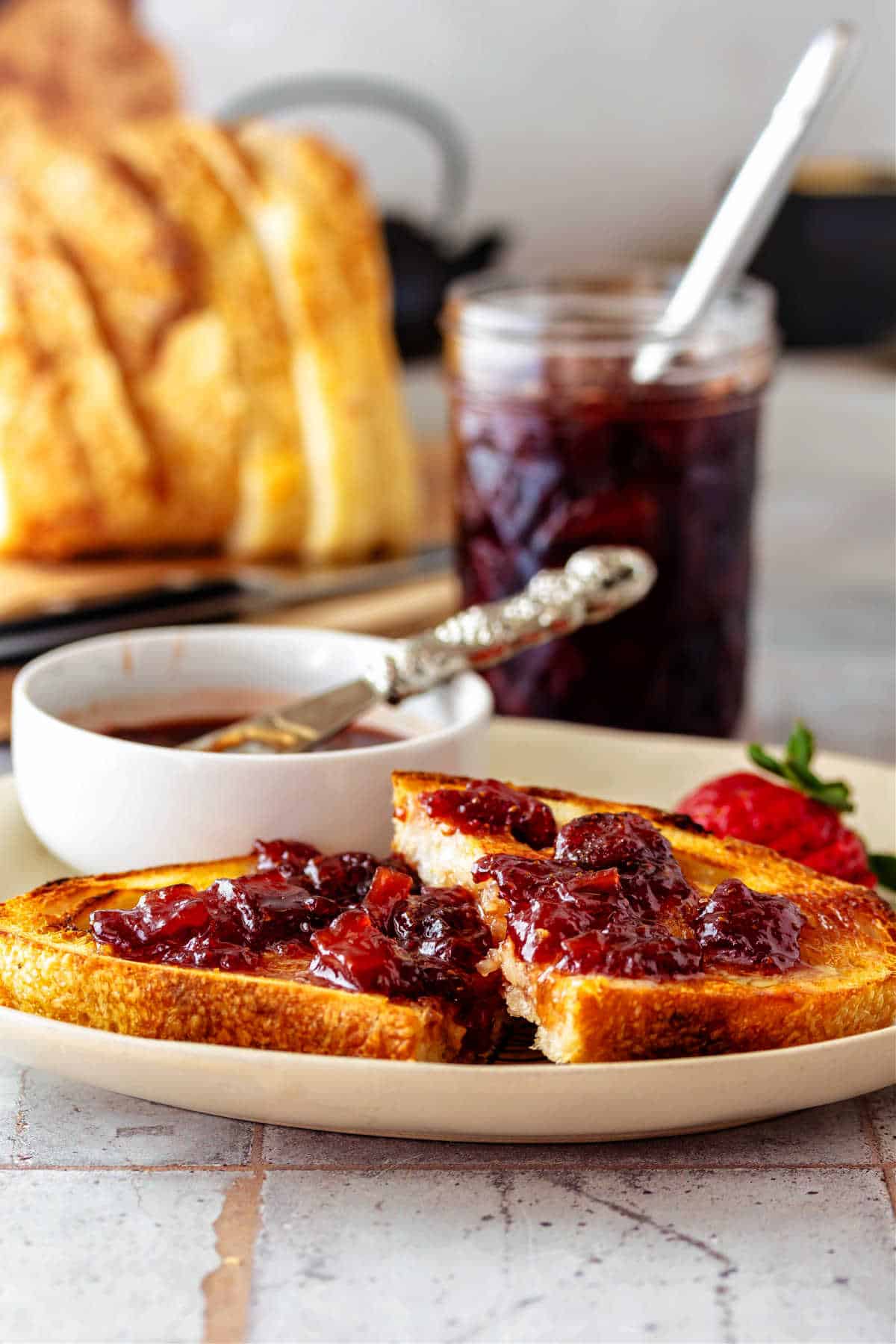Caramel is a wonderful thing. Making it is kind of exhilarating, because you have to bring your sugar to just the right color before pouring in liquid. If you go too far, it will burn. You’re basically playing chicken with the sugar.
The lighter the caramel, the sweeter it is, but the less complex the flavor. The darker you take your caramel, the more complex the flavor, but it will lose some of its sweetness.
trLight caramel is adored by children. Dark caramel is adored by foodies. As an added bonus, caramel is a bit of a chameleon. Add cream for a traditional caramel sauce. Add wine for a wine caramel. Add passion fruit juice for a passion fruit caramel. Variations really are pretty endless.
Pastry Chef Online Participates in Affiliate Programs. If you make a purchase through one of my links, I may earn a small commission. For more information click to read my disclosure policy
- In a heavy bottomed large saucepan, bring sugar and a little water to a boil. Cover with a lid or some plastic wrap and let boil for 2-3 minutes to wash down any errant sugar crystals.
- Remove lid and continue to cook until sugar begins to turn color. At this point, you may stir it. Others will say NO!, but the coloring signals the breakdown of the sucrose and its crystalline structure, so stir away. Do make sure you are stirring with a clean, heat resistant spoon or spatula. I usually use a spatula with a white silicone head so I can hold it up and check the color of the caramel against the white background.
- When the sugar is the color you want it, remove from the heat and add your liquid. It will boil up and splash a lot and make a big fuss, so stand back and make sure your pan is way bigger than you think you will need. Add the liquid all at once though. If you are too timid and add it slowly, the temperature of your sugar will continue to rise and you could burn it. Adding the liquid all at once will bring the temperature down quickly enough that this should not happen. So why all the big noise and sputtering? Once your sugar has reached the caramel stage, it is at least 320 degrees. Water boils at 212F. Add in your water-based liquid (cream, juice, what have you), and all that water will boil at once. Wow. If you add wine, the alcohol actually boils at a lower temperature than water (about 175 degrees, F), so you’ll get the double whammy of alcohol boil plus water boil.
- At any rate, add in your butter and flavorings, and there you go.



Join in Today!